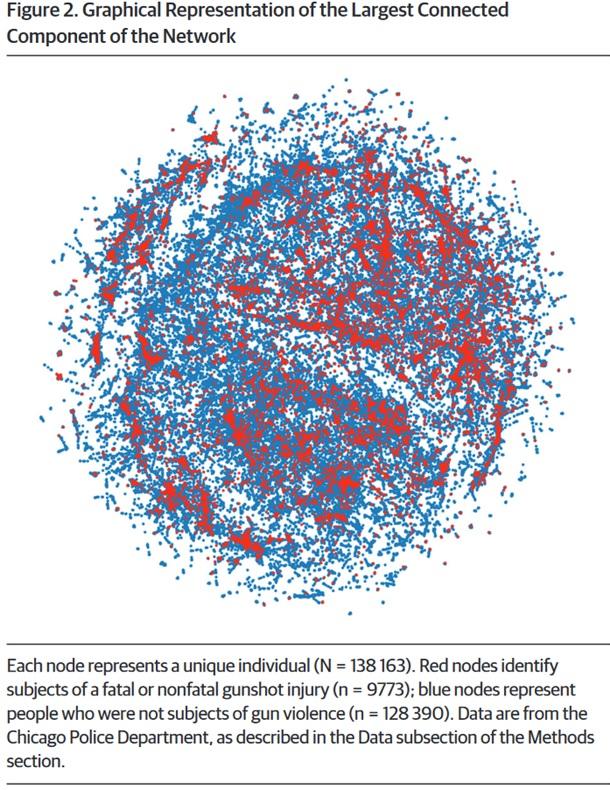Violence Really is a Disease – Research Shows That Violence Spreads Through Social Contagion
Violence is one of the most frightening and tragic things a person can experience. Whether in war, in our community, or even in our own homes, violence kills, injures, disables, and devastates people. It is not unfitting that some people think of violence as a disease. However, characterizing violence as a disease might be more than just a metaphor, but actually scientifically accurate. Just as some people speak of ‘epidemics of violence’, research finds that violence actually spreads throughout communities sort of like a contagious disease. While people don’t catch violence the same way they catch the flu, there are ways in which violence spreads from person to person to harm communities at large.
This week’s article reports on trends in gun violence in Chicago to examine the contagion of violence.1 The researchers who conducted this study looked at a social network of Chicago residents who were involved in criminal activity. Using data on arrests and gunshot victims in Chicago from 2006 to 2014, the researchers captured the web of social connections among the arrestees. The researchers then examined how gunshot victims emerged in the network of arrestees. The goal was to see if there was a pattern in who becomes a victim of gun violence.
The pattern that emerged was surprising and alarming. When one person in the network became a victim of gun violence, each of the other people they were connected to also tended to become victims of gun violence too. Just as a contagious virus spreads from person to person, injuries from gun violence appeared to spread from person to person overtime. The image to the right, taken from this weeks article, shows what this looks like; the dots are all people in the social network – the red dots are people who were victims of gun violence, the blue dots were people who did not experience gun violence. The graph shows clear clusters of gun violence victims, and the statistical analyses conducted by the researchers confirm this.
Why does gun violence spread like a contagious disease? Is there a hellish virus that causes people to become violent? Scientists have explored some of the possible causes for this horrifying pattern. A prominent explanation is that community gun violence usually happens in cycles where people keep retaliating against each other.2 In these cases, one person shoots another over an argument, then the friends of the person who was shot shoot the person who shot them, then the other side retaliates back by shooting another friend of the first victim, and then each side keeps trading shots in a vicious cycle. As long as each side keeps retaliating, the friends of the people who were shot end up getting shot themselves, hence the spread of gunshots from person to person.
As frightening as this contagious pattern may be, it sheds light on how community violence can be prevented. Some programs have used this research to design interventions to community violence that focus on stopping its contagious spread. 3 For example, the spread of gun violence can be stopped when respected members of the community work to deescalate conflicts or talk down the friends of gunshot victims from retaliating. Other approaches involve more long-term change, such as teaching young community members that they don’t need to use violence to be respected. The good news is that other research shows that peace is contagious too.4 Peace can spread quickly once it is made the norm in a community.
Definitions
Social network – A social network is the web of connections among a group of people. For example, the people at your job that you interact with are part of your work network.
Sources
- Green, B., Horel, T., & Papachristos, A. V. (2017). Modeling contagion through social networks to explain and predict gunshot violence in Chicago, 2006 to 2014. JAMA internal medicine, 177(3), 326-333.
- Silver, A. H., & Yeates, E. F. (2021). Gun Violence as an Infectious Disease. Adolescent Gun Violence Prevention: Clinical and Public Health Solutions, 55-68.
- Butts, J. A., Roman, C. G., Bostwick, L., & Porter, J. R. (2015). Cure violence: a public health model to reduce gun violence. Annual review of public health, 36, 39-53.
- Pinker, S. (2012). The better angels of our nature: Why violence has declined. Penguin Books.

